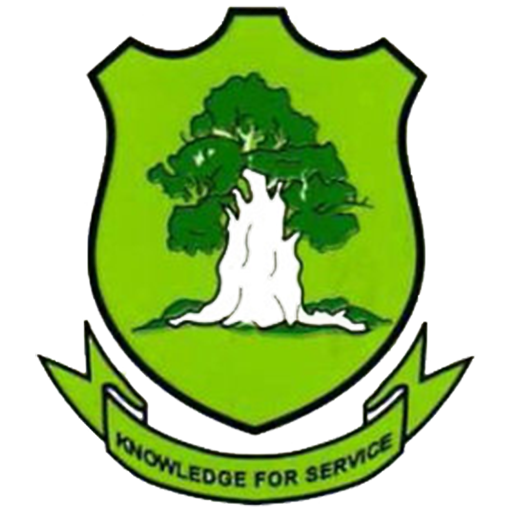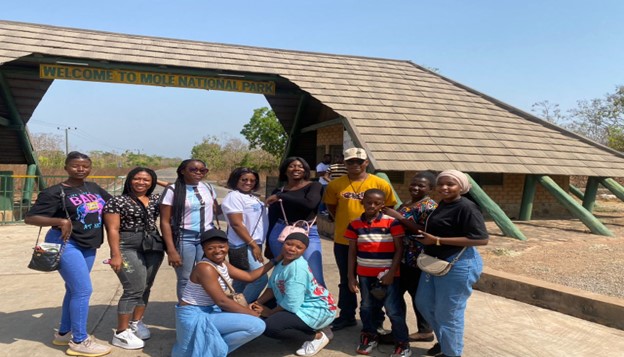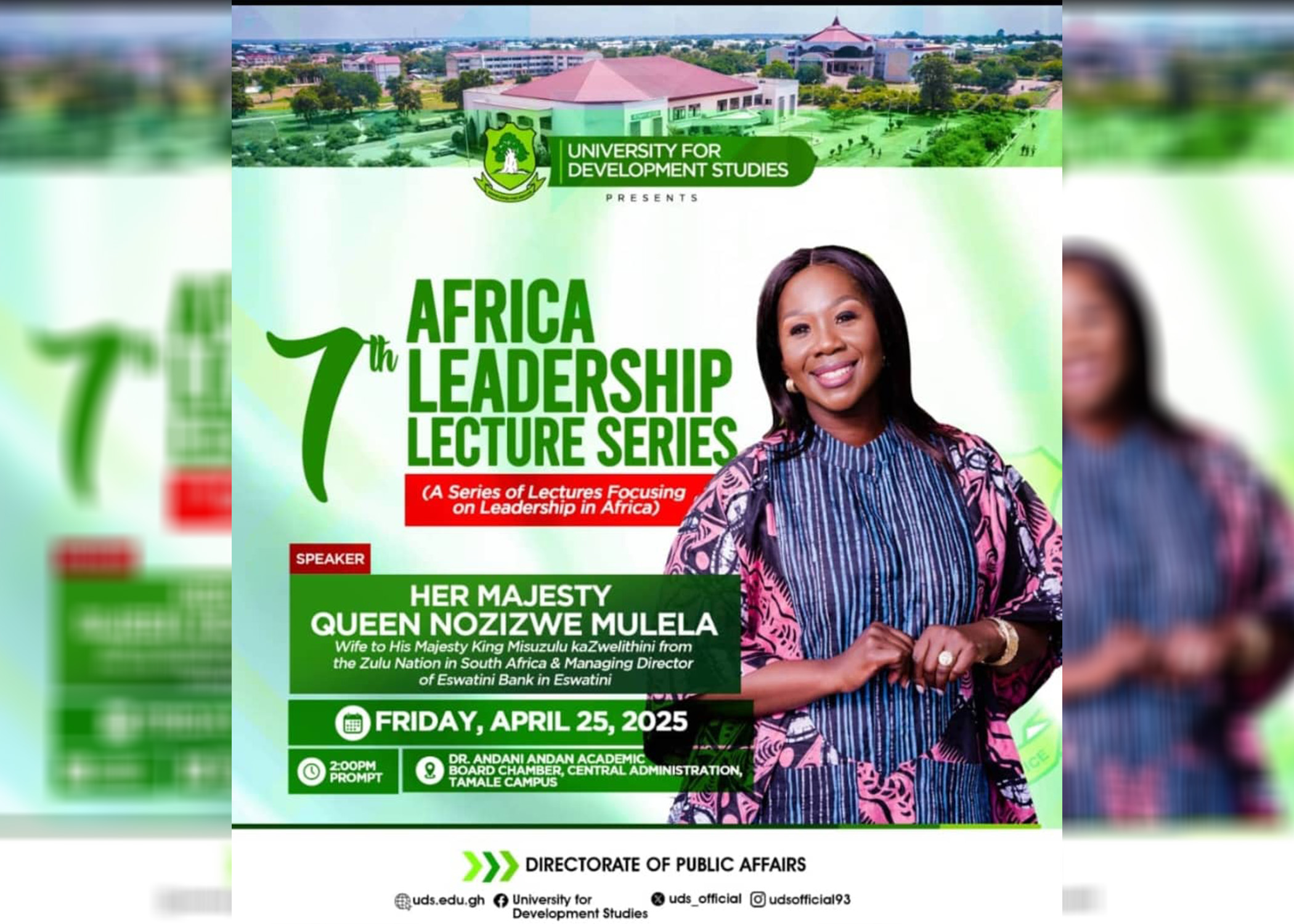Students Of The Department Of Ecotourism And Hospitality Management Pay Educational Visit To Sites In The Savannah Region
Introduction
Travelling is part of education and indeed, as Margaret Meed (1901-1978) puts it “as the traveller who has once been away from home is wiser than he who has never left his own doorstep”. Therefore, an excursion is not just a pleasure trip; it enhances the knowledge of the excursionists (students) beyond what they learn in the classrooms or lecture theatres. It gives students solace and help them form an escape route from boredom. To provide such an enriching experience and platform to students, the Department of Ecotourism and Hospitality Management of the University for Development Studies organized an excursion for its entire 75 students on the 4th of March, 2023. This was the first of its kind organized at the behest of both senior members and students of the department since its creation in the 2019/2020 academic year.
The students were accompanied on the trip by the HoD and another lecturer of the department who also doubles as the department’s trip organizer. We have since pledged to make the excursions an annual affair. As students pursuing an ecotourism and hospitality programme, we have learnt a lot when it comes to destinations and/or product development and management in the country and beyond. We know that Savannah Regions in the country hosts the best facility in terms of wildlife stock (Mole National Park). It was a bright Saturday morning when the students gathered at the premises of the basketball court of the Nyankpala Campus at 6:30am to start their journey aboard a school bus, which took off at 7:10am. It was all fun and excitement on the bus with music blurring while students sang along.
The journey was approximately a 3 hour long one but didn’t seem so because of the fun aboard the school bus. There was a stopover at the Damongo market where we all got off the bus to have some refreshment. After some 30 minutes later, we were back on the bus and headed towards Mole. We passed through various towns and villages and saw some beautiful sceneries that caught our attention.
Savannah Lodge is put up by a non-governmental organization for community and rural development projects called Bambenninye Community Development Services. This organization educates and organizes communities in Larabanga and its neighboring towns to build the people’s capacity and to help them out of poverty. Its main activities are the creation of local community income-generating opportunities through ecotourism, which generates funds used in helping raise health and educational standards for the villages and to create employment opportunities for the local people with the participation of a broad range of community members.
Arrival at Mole National Park
We soon got to the park where our purpose for visiting was made known to the security at the entrance by the lecturers. At the entrance, we seized an opportunity to take pictures. We then made our way to the park administration where we met with a management representative who took us through the history of the park and also briefed us on the dos and don’ts of the park.
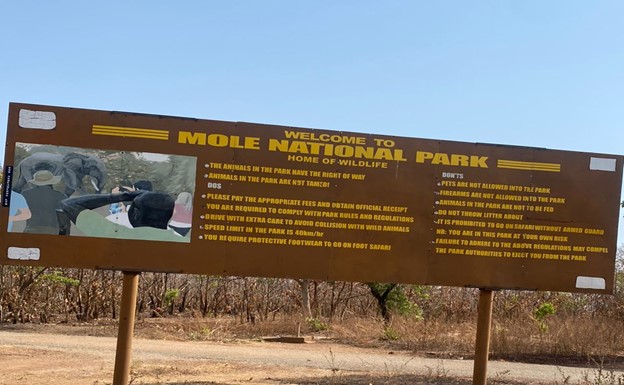
Briefings at the Park
Mole National Park (MNP), the oldest and largest wildlife protected area in Ghana with a size of 4577 km2 came into existence in the year 1958. In the early 1930s, the park was not a conservation area but rather consisted of some communities who were the Gonjas, the Vagalas, the Tampulmas and some Sisaalas. A time came when these communities had an outbreak of a disease that saw many killed and weakened others. The leaders of these communities decided to send a complaint of this to the then government to come to their aid. After thorough investigation by the government representatives, it was realized that the people were suffering as a result of tsetsefly attack, and, it was due to the presence of wild animals to which these tsetseflies fed on and then transmitted the disease (Trypanosomiasis, commonly known as the “sleeping sickness”) to the people as the tsetselies fed on the inhabitants as well. The government then decided to save human lives instead of the animals and so suggested game clearance (killing all the animals) so that these animals would not be able to host the tsetseflies again, which will result in th reduction of the tsetsefly numbers and thus reducing the vectors of the disease. However, due to the size of the park, the clearance continued till in the year 1957 when Dr. Kwame Nkrumah came into power and realized there was no change since the people were still suffering, and, therefore decided to go in for an alternative solution. He suggested they put a stop to the clearance and rather relocate the people to protect them from these tsetseflies, and to also turn the place into a conservation area where the landowners and the government will benefit from in future. His idea was supported and the government’s representative met with the Yagbonwura (overlord of the Gonja Kingdom) since the land was in the Gonjaland and explained the idea to him and his people who understood and accepted it. Quickly releasing the land to the government on an agreement of being compensated, a year later (in 1958, a year after the country gained independence from its colonial masters), the people were compensated and relocated to places free of tsetseflies. The area was then turned into a game reserve. Its boundaries were later on clearly defined and gazzeted as a national park in 1971 with legal documents backing it. The vision of Dr. Kwame Nkrumah thus materialized because the landowners were compensated, and the country is generating revenue from the park presently.
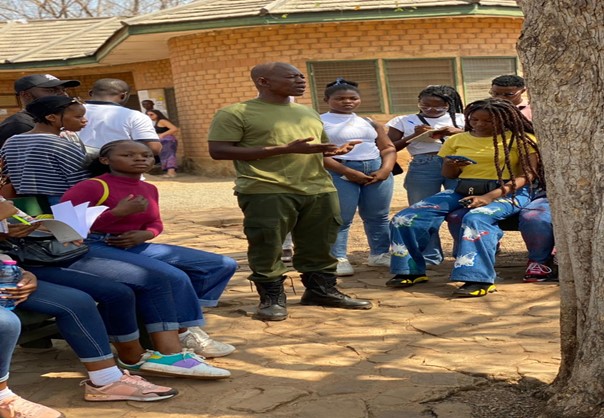
A management representative taking students through the history of Mole National Park
The Journey into the Park Proper
We were guided into the park by two tour guides to see the animals in the facility after the briefing by the management representative. We went on foot safari climbing down the hill wasn’t a big issue because it didn’t require much energy, coupled with the anticipation and excitement of seeing the animals in their natural habitat. However, we almost gave up in the middle of climbing back up due to exhaustion. There was a documentary shown to us at the reception of the park after which Dr. Conrad Wuleka Kuuder and our counsellor, Mr. Philip Ebo Quansah thanked management of the park for the warm reception after which we boarded the bus enroute to the Larabanga ancient mosque and the mystic stone.
At Larabanga
When we arrived at Larabanga, we were received by a tour guide who also took us through the history of the mosque and how it came in existence. We were taken round the mosque and shown the various doors to the mosque and its respective functions.
The Larbanga Ancient Mosque
It is the oldest mosque in the country as well as one of the oldest in West Africa that was built in Sudanese architectural style in 1421 by Ibrahim Idana. The inspiration to relocate and settle came after the death of his friend and companion that he started the journey with. He then decided to move to a far away place to settle. A place that was considered to be pure and devoid of bloodshed, and also one that wouldn’t remind him of the death of his friend. He moved and settled near a mystic stone in the present day Larabanga community where he observed his prayers. After some time, he decided to build a prayer ground but due to the sloppy nature of the ground near the mystic stone it was impossible to build a mosque there. As he was contemplating on what to do, he decided to throw his spear into the air, and would build the mosque at the place where the spear will land. The spear surprisingly landed on an already built foundation of a mosque 500 metres away from where he stood (the mystic stone) when he searched and found it. He was surprised to see an already laid foundation of a mosque because there was no sign of any form of settlement there. He decided to look around there for clues of any settlement but ended up finding a book. This book was written in Arabic and had instructions on how to continue with the building of the mosque. Without hesitating, he started with the building of the mosque and would go back to the mystic stone where stayed at the end of each day, but realized that the mosque increased in height each time he came to continue from where he stopped the previous day. To confirm this, he decided to place timber elements (sticks) on the building to mark where he stopped and truly when he came back the next day the building really increased in height. He continued with this till the mosque was completed, and, this is the reason for the timber elemets in the mosque. It was built with mud, sand, clay, honey and cow dung. The mosque has four doors; the one at the back of the mosque is mearnt for only women, the one at the left side of the mosque is meanrt for the muazzin (a man who calls muslims to prayer), the one at th right of the mosque is also meant for only men and the fourth one which is at the front of the mosque is meant for the imam of the mosque.
Aside from the mosque, there is also a baobab tree behind it which stands directly over the grave of the founder of the mosque. His last wish was to be buried around the mosque after he passes on and also hinted of a tree shooting up from his grave a few months after he was buried.
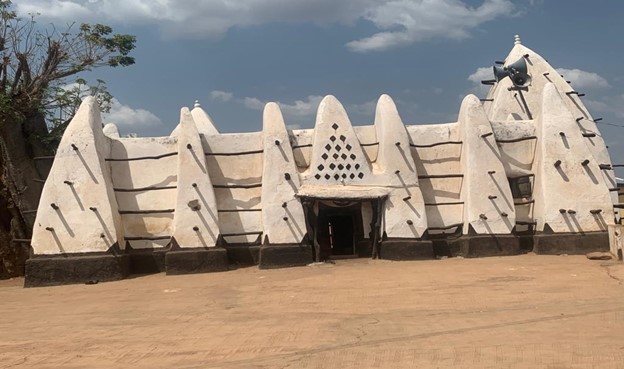
Larabanga Ancient Mosque
The Larabanga Mystic Stone
After we were done at the Larabanga Ancient Mosque, we proceeded to the mystic stone which is located on the outskirts of township. It also happens to be the first place the founder of the Larabanga Mosque settled when he went out in search of a place to settle, and also where he stood and threw the spear in the air. This is a stone that returned to its original place each time it was removed to pave way for the construction of a road by the British authorities in the 1950s at the Larabanga community. The authorities of the community advised they leave it and change the direction of the road, which they did. The elders of the community termed it as mystic stone where tourists from all walks of life visit, and others also use the site as a place of worship hoping to receive miracles of healing, childbirth, and financial breakthroughs.
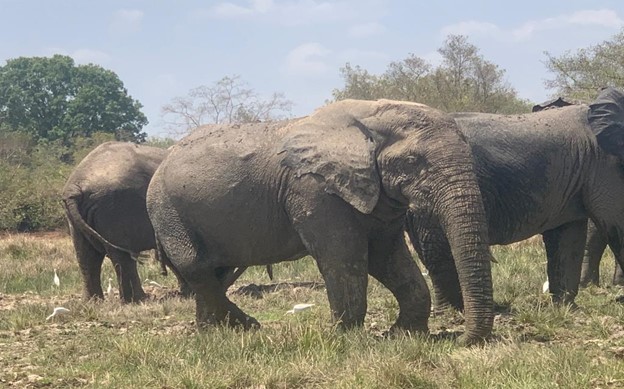
The Journey back to Tamale
The excursion came to an exciting end after visiting the mystic stone. The bus took off at 3:00 pm after we all made our way around the stone. We got back to campus at 5: 45 pm, disembarked and dispersed to our various hostels. The main purpose of the excursion was achieved as it was to broadened our mental horizons and enhance our learning experience. We learned a lot when it comes to attractions management in the lecture theatres which included national parks but it was so thrilling to be there and seeing these physically. This excursion enhanced our knowledge of ecotourism resources such as national parks and other historical resources like the mosque and the mystic stone, and the experience of this visit will create lasting memories in our minds.
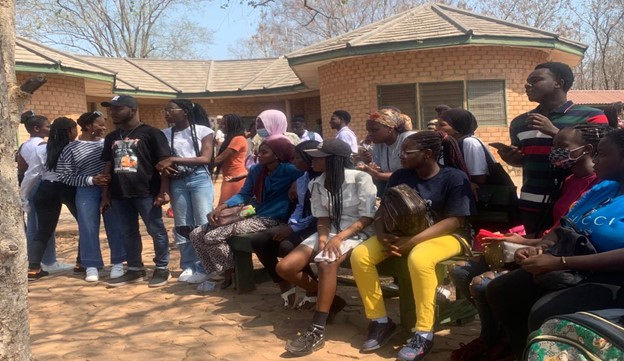
Recommendations
Mole National Park can best be marketed through flyers of the attractions therein. These flyers are then distributed to schools and institutions as teasers. This will encourage a lot more of educational institutions to organize educational tours and excursions to the facility for firsthand experience.
It is also our considered opinion that the Larabanga Mosque should be fenced as a tourist site, and tourist sites are not meant to only excite themselves and increase their knowledge of attractions but this will prevent the issue of so many local people who try to follow tourists around when at the site. This will improve the visiting experience and improve revenue generation at the facility..
There should be stationed an English translator who stands side by side with the caretaker of the mystic stone who would be able to translate whatever he says to English for better comprehension by the visitor. Most tourists visiting do not understand the native language of the area or the Twi that the guide there often uses in telling the history of the mystic stone.
Story By:
Ruhiya Abubakari
(Level 400 student of the Department)
